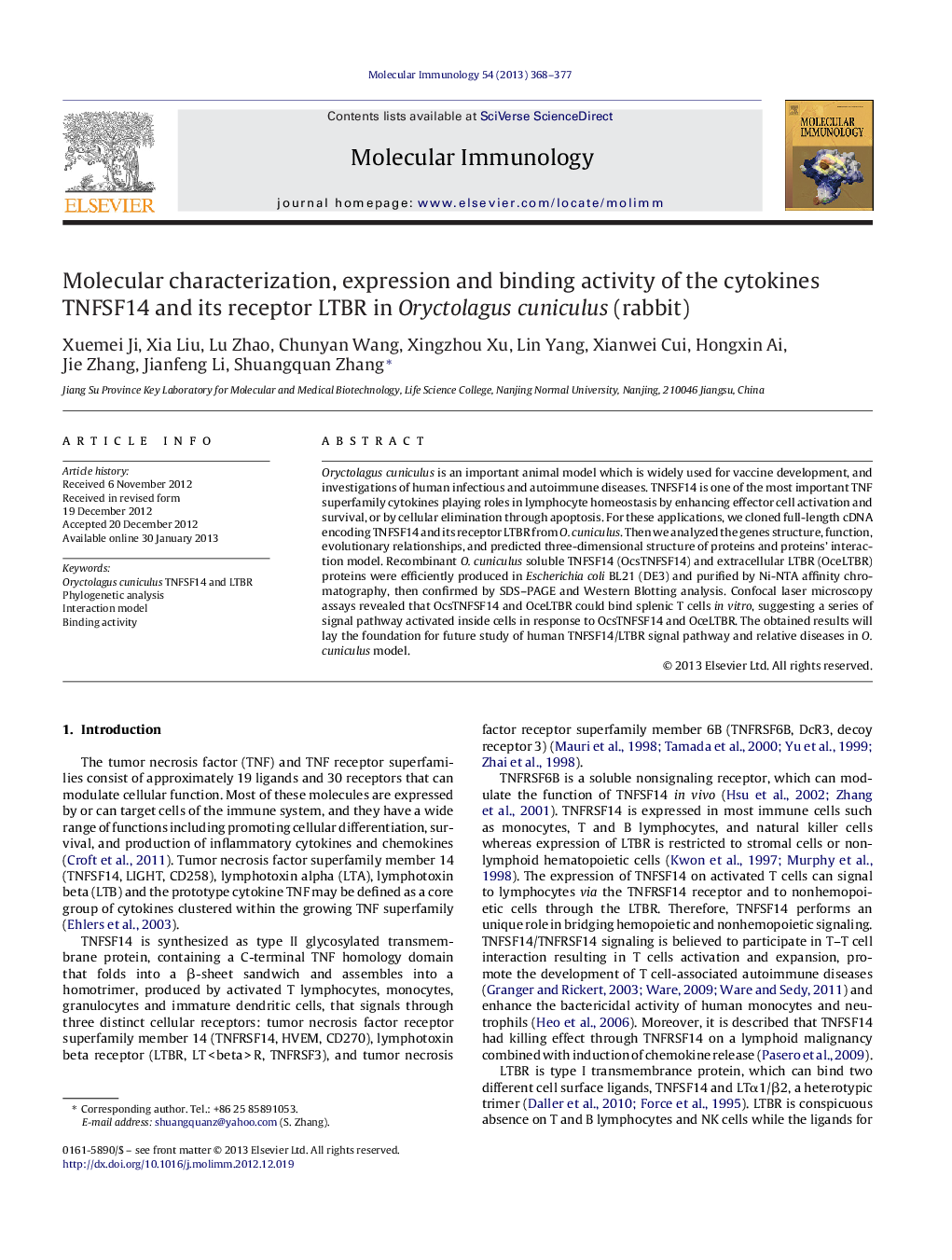| Article ID | Journal | Published Year | Pages | File Type |
|---|---|---|---|---|
| 2831191 | Molecular Immunology | 2013 | 10 Pages |
Oryctolagus cuniculus is an important animal model which is widely used for vaccine development, and investigations of human infectious and autoimmune diseases. TNFSF14 is one of the most important TNF superfamily cytokines playing roles in lymphocyte homeostasis by enhancing effector cell activation and survival, or by cellular elimination through apoptosis. For these applications, we cloned full-length cDNA encoding TNFSF14 and its receptor LTBR from O. cuniculus. Then we analyzed the genes structure, function, evolutionary relationships, and predicted three-dimensional structure of proteins and proteins’ interaction model. Recombinant O. cuniculus soluble TNFSF14 (OcsTNFSF14) and extracellular LTBR (OceLTBR) proteins were efficiently produced in Escherichia coli BL21 (DE3) and purified by Ni-NTA affinity chromatography, then confirmed by SDS–PAGE and Western Blotting analysis. Confocal laser microscopy assays revealed that OcsTNFSF14 and OceLTBR could bind splenic T cells in vitro, suggesting a series of signal pathway activated inside cells in response to OcsTNFSF14 and OceLTBR. The obtained results will lay the foundation for future study of human TNFSF14/LTBR signal pathway and relative diseases in O. cuniculus model.
► We report the gene structure and phylogenetic analysis of Oryctolagus cuniculus TNFSF14 and receptor LTBR. ► The expression pattern of TNFSF14 and LTBR genes were investigated in various tissues. ► The interaction model of OcsTNFSF14 and OceLTBR was simulated by Discovery Studio 2.1. ► We describe the expression and binding bioactivity analysis of OcsTNFSF14 and OceLTBR proteins in vitro.
